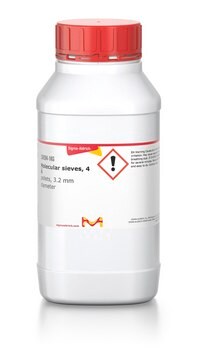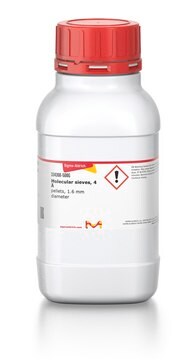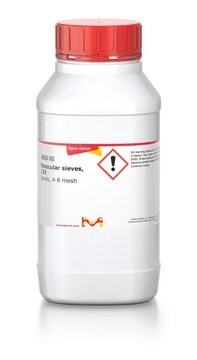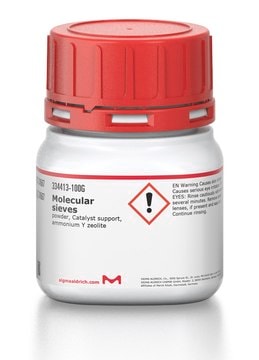208574
Molecular sieves, 3 Å
beads, 4-8 mesh
Synonym(s):
Molecular Sieve UOP Type 3Å
About This Item
Recommended Products
Looking for similar products? Visit Product Comparison Guide
Related Categories
General description
Application
They may also be used in the following:
- As a general-purpose drying agent in polar and nonpolar media.
- Commercial dehydration of unsaturated hydrocarbon streams, including cracked gas, propylene, butadiene, acetylene
- Drying polar liquids such as methanol and ethanol.
- Adsorption of molecules such as NH3 and H2O from a N2/H2 flow.
Storage Class
13 - Non Combustible Solids
wgk_germany
WGK 3
flash_point_f
Not applicable
flash_point_c
Not applicable
Choose from one of the most recent versions:
Certificates of Analysis (COA)
Don't see the Right Version?
If you require a particular version, you can look up a specific certificate by the Lot or Batch number.
Already Own This Product?
Find documentation for the products that you have recently purchased in the Document Library.
Customers Also Viewed
Our team of scientists has experience in all areas of research including Life Science, Material Science, Chemical Synthesis, Chromatography, Analytical and many others.
Contact Technical Service










